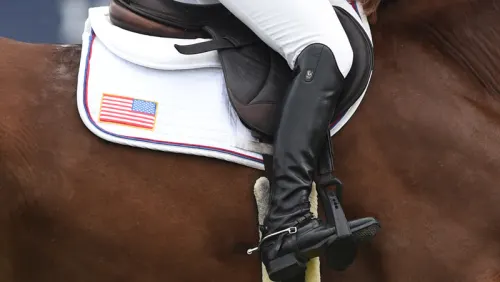The second annual U.S. Hunter Jumper Association convention, Dec. 5-8 in Miami, Fla., showed that the fledgling organization has broken from the starting gate and is off and running. After its first full year in existence, the many committees and task forces accomplished a plethora of goals that promise to move the association and the sport forward.
The four-day convention included informative clinics, open committee meetings and other forums that allowed free and open lines of communication between directors, committees and members. The USHJA now has 32,000 members, and about 250 attended the convention, with members from most of the U.S. Equestrian Federation hunter zones and jumper regions attending, including members from as far away as Alaska.
As predicted, the new helmet rule was debated vigorously in several committees and forums, and members opposed to the rule—which went into effect Dec. 1 and requires ASTM/SEI-approved helmets to be worn by all members competing over fences—had an opportunity to voice their opinions.
But the four rule-change proposals—by Patty Heuckeroth, Tony Workman, Margie Engle and Gary Baker\-o alter the helmet rule in various ways were not supported in either the rules forums or within the committees.
As part of the USHJA\’s continuing education, Dr. William Brooks, a respected neurologist, held a helmet safety seminar to discuss his own experience in treating head injuries, including equestrians, for 30 years. While he doesn\’t prescribe one particular helmet, he noted that the ASTM/SEI-approved helmets are the safest currently on the market due to their construction and testing standards.
Helmet manufacturers and distributors also attended the convention and participated in several meetings to answer fitting questions and provide additional information. Many members spent time trying on the many different brands and styles of helmets available, and they were able to discuss their wants and needs with manufacturers\’ representatives as well as with knowledgeable helmet fitters Berk Lee and Danielle Santos of The Tack Box in Middleburg, Va.
ADVERTISEMENT
The first show managers clinic, produced by Tom Struzzieri and the USHJA Show Managers Committee, received rave reviews. More than 100 people attended this clinic, which provided valuable information for both competition managers and exhibitors. Speakers included Dr. Hillary Clayton, who discussed footing; and James Mitchell of Great American Insurance Group and Mary Moeller of Marshall & Sterling, who discussed different facets of insurance.
The show standards meeting on the final day (presented by Howard Pike) provided an overview of the efforts undertaken so far on such topics show standards, the mileage rule, dates and levels of competition. This task force has done a tremendous amount of work preparing for the new competition-licensing program and will continue, as the results of their analysis of an industry-wide survey to horse show managers is still being compiled.
During the three rules-change proposal forums (general, hunter and jumper), a number of modifications and house-cleaning proposals dominated the slate. But several topics created major discussion, including a proposal to delete the rule change passed last year that prohibited mounted riders in the show ring from wearing cell phones or other transmitting devices. Those opposed to the rule believed it\’s impossible to regulate, while proponents countered that the rule has only been in effect a short time and people need more time to understand it. (For instance, a groom jogging in a horse for a ribbon may still wear his or her walkie-talkie and not be penalized.)
Additionally, the hunter and jumper rules forums addressed the number of refusals that a competitor could incur before being eliminated. In the past, three refusals was cause for elimination, but now that Federation Equestre International rules limit refusals to two, both the hunter and jumper forums considered changing their rules for consistency. Many people believe three refusals at the lower levels should be allowed for training purposes. The proposal was tabled for further analysis.
Beth Miner was awarded the Wide Rill Farm Trophy as USHJA Volunteer of the Year. She\’s participated in equestrian sports for more than 30 years and served on the Board of Directors of the USEF and USHJA, as well as devoting countless hours as a committee member and chairman.














